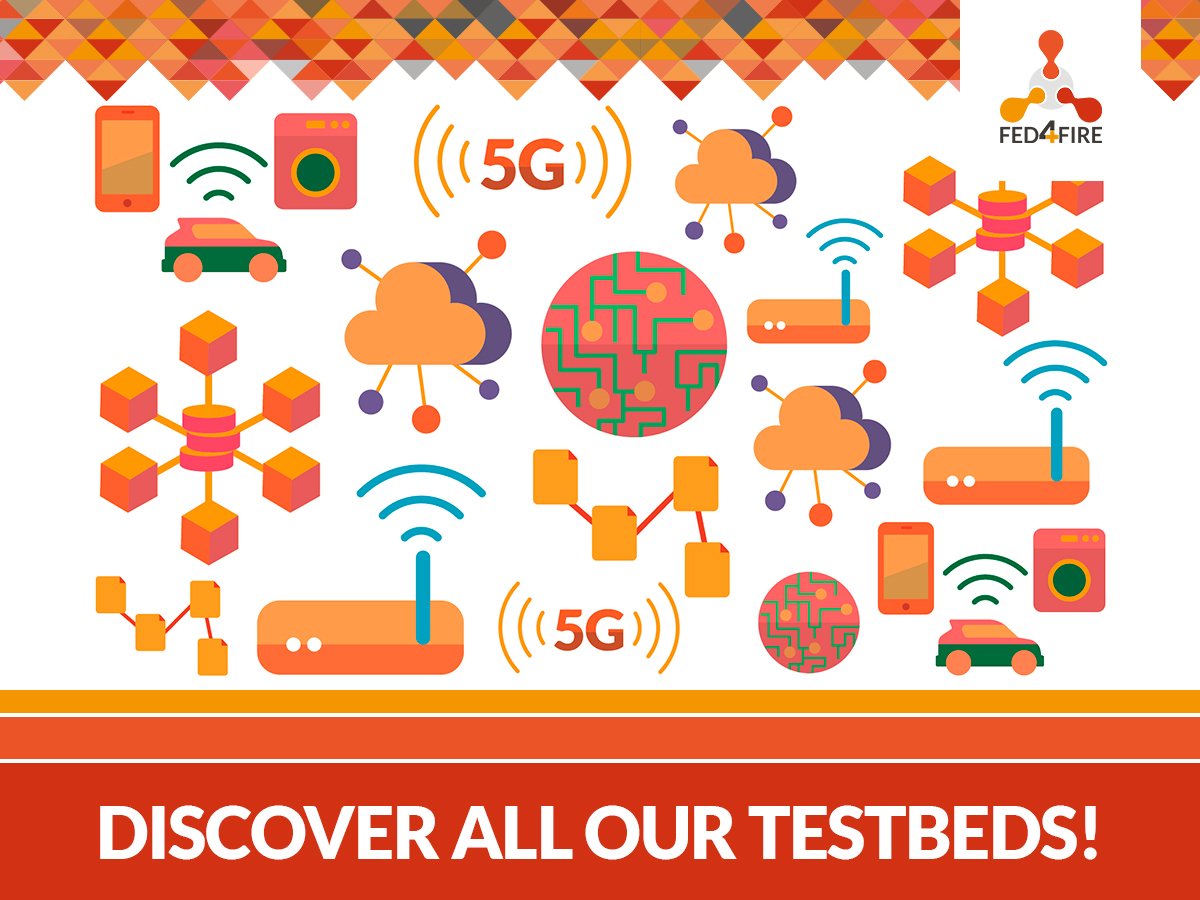On Monday, 29 June 2020, Brecht Vermeulen, from Ghent University and Technical coordinator of Fed4FIRE+, led a tutorial introducing Fed4FIRE+ testbeds during the 6th IEEE International Conference on Network Softwarization (NetSoft). The tutorial focused on experimentation with SDN/NFV and clouds, using the Virtual Wall testbed of imec as the main testbed (https://doc.ilabt.imec.be/ilabt/virtualwall/). The tutorial consisted out of 5 items:
- A general introduction on Fed4FIRE and Fed4FIRE testbeds
- Hands-on tutorial on using the jFed tool to experiment from zero to hero
- An introduction tutorial on OpenFlow using Floodlight
- Experiences on SDN/NFV experimenting on Fed4FIRE (by Molka Gharbaoui of CNIT)
- Advanced networking and cloud experiments (by Thijs Walcarius of UGent/imec)
The tutorials, documentation and presentations are available at https://doc.fed4fire.eu and https://doc.fed4fire.eu/tutorials.html. There was an attendance of about 30 people and a follow-up interest to use the testbeds by about 10 people.

The talk on experiences of SDN/NFV experimenting presented three main research activities that were experimentally carried out and assessed on the Fed4FIRE+ testbeds by a team of academic experimenters as an example how experimenters use the Fed4FIRE platform.
The first research activity “SDN-based Resource Orchestration in Cloud Data Centers” proposed an SDN-DC orchestrator. The orchestrator provides an abstraction of the data center resources as well as composition and selection functions, which allow the DC administrator to deploy innovative management applications. Moreover, it enables the dynamic placement of VMs on physical servers using heuristics that satisfy their requirements while taking into consideration the current status of the DC resources.
The second research activity carried out on the Fed4FIRE+ testbed focusses on latency-aware Service Chain Deployment in Distributed Clouds. This activity addresses 5G services, which demand more stringent requirements in terms of latency and have to promptly adapt to dynamic context of users, resources and services. An innovative solution is proposed to provision chains of services dynamically selected to minimize the end-to-end latency as required by 5G applications. The prototype developed within this activity was awarded as a “Best Demo of an innovative prototype” at the IEEE NFV-SDN 2018 conference and at the 3rd Fed4FIRE+ Engineering Conference.
The third research activity presented during the tutorial is related to intent-based SDN-capable slice deployment. Aim of this activity is to implement an automated deployment of tenant-managed SDN-enabled network slices using an ETSI NFV MANO platform. The focus is on the dynamic enforcement and configuration of a slice releasing the vertical from specifying details, in particular regarding SDN capabilities that are automatically and programmatically established while all slice settings are handled by the ETSI MANO platform.
These research activities have been carried out by Dr. Molka Gharbaoui and Dr. Barbara Martini from the Photonic Networks and Technologies CNIT Research Unit (PNT Lab, Pisa, Italy) in collaboration with researchers from other CNIT Research Units, in particular from the University of Pisa, the University of Bologna and the University of Florence. Dr. Gharbaoui and Dr. Martini have been highly active as experimenters in Fed4FIRE+ infrastructures. They have been actively involved in several research activities that aim at providing innovative network management solutions and addressing 5G stringent requirements.
In the last years, the scientific approach behind this research has been based on experimental methods conducted on the Fed4FIRE+ testbeds where several activities and proof of concepts have been assessed and validated. Both researchers appreciate the Fed4FIRE+ testbeds as they allow to overcome the shortcomings of the laboratory testbeds and simulators (i.e., limited resources, non-realistic experiments) and represent an easy to use facility and a good way to perform large-scale and cross-functional tests in flexible, reconfigurable and realistic environments.
Are you interested in using the Fed4FIRE+ infrastructure, too? Have a look at our facilities (https://www.fed4fire.eu/testbeds/)






